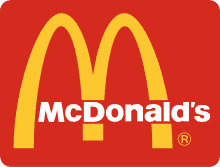
Losing your job can be devastating financially and emotionally. Unfortunately, tens of thousands of people are experiencing that firsthand as the number of companies reducing their headcounts mount.
This week, job cuts at Disney reached 4,000, and recently layoffs have been announced by Lyft, Meta, Amazon’s Whole Foods and other large firms, too.
As disorienting as a layoff can be, experts say it’s important to take a few steps right away.
1. File for jobless benefits and other aid
Apply for unemployment benefits as soon as possible after a layoff, said Michele Evermore, a senior fellow at The Century Foundation.
“As soon as you leave your job, you should be on your way to the unemployment insurance office,” Evermore said.
In some states, it can take weeks for your claim to be approved, so the sooner you file, the better.
While most states have a one-week waiting period before they can start paying you benefits, you don’t have to wait to request the relief, Evermore said.
Apply with your state unemployment office. You can typically submit an application online or over the phone.
There are other resources, too, for people struggling financially due to job loss, Evermore said.
“Unemployment insurance isn’t the only program in the world,” Evermore said, adding that out-of-work people can also try applying for food stamps and other aid.
2. Weigh health insurance options
Job losses often also mean losing your health insurance.
“As overwhelming as it may be, it’s important to look for coverage quickly” after a layoff, said Caitlin Donovan, a spokesperson for the National Patient Advocate Foundation, a nonprofit that helps individuals access and pay for health care.
Your first step should be to speak with someone in your company’s human resources department to understand when your coverage technically ends.
“There’s no blanket rule here: For some, coverage may end immediately; for others, it may go until the end of the month,” Donovan said. “Either way, you should immediately start planning to transition to a new plan.”
Navigating the health insurance landscape on your own can be stressful and confusing.
There are resources you can turn to for help. If you have a diagnosed condition, including cancer, lupus or diabetes, you may be able to get support deciding on and enrolling in a plan with the National Patient Advocate Foundation, Donovan said. You can also consult with a local health-care “navigator.”
Generally, newly laid off and uninsured people will have three routes to health coverage from which to pick: COBRA, the Affordable Care Act subsidized marketplace or a public plan such as Medicaid or Medicare.
COBRA gives those who have left a company the option of staying on their former employer’s insurance plan, although it’s typically very expensive. That’s because people have to pay not only the part of their premium they were responsible for while working, but the portion their former employer had covered, as well.
Medicaid typically involves no or low monthly premiums, and marketplace plans can come with generous subsidies.
3. Protect your retirement savings
Many people save for their retirement through their job. If you had access to a 401(k) plan at your former employer, you’ll need to decide what to do with that account.
You may not want to do anything, said Rita Assaf, vice president of retirement leadership at Fidelity.
Most employers allow you to keep your plan with them after you leave, Assaf said. (However, if you have less than $5,000 in the account, the money may be sent to an individual retirement account for you, she added.)
However, you won’t be able to continue contributing to a plan at a former employer. And you may be limited in how much you can take as a loan or withdraw from the account.
Another option is to roll over the account into an IRA, which can be opened at a bank or brokerage firm. This would allow you to continue saving. You may also be able to withdraw money from this account if you’re under 59½ without any penalties, Assaf said, if you use it for a first-time home purchase or higher-education expenses.
“Make sure to research fees and expenses when choosing an IRA provider, if you do, though, as they can really vary,” Assaf said.
If you’re hopping to another job right away, you may have the option to roll your old 401(k) plan into one with your new employer. Having just one savings retirement account may feel more manageable.
“It’s important to note that not all employers will accept a rollover from a previous employer’s plan, so you should check with your new employer before making any decisions,” Assaf said.
What you don’t want to do, if at all possible, is to cash out the account, she said. You’ll likely be dinged with taxes and penalties, and could set yourself back on your retirement goals.
























